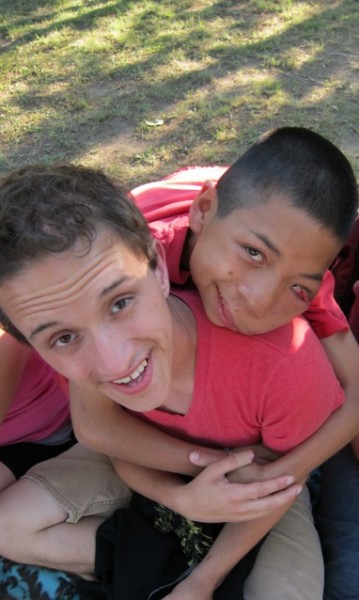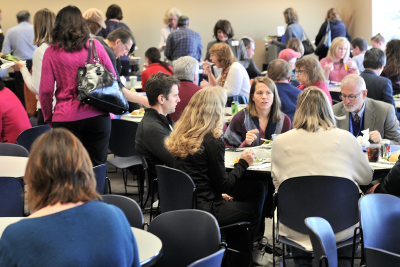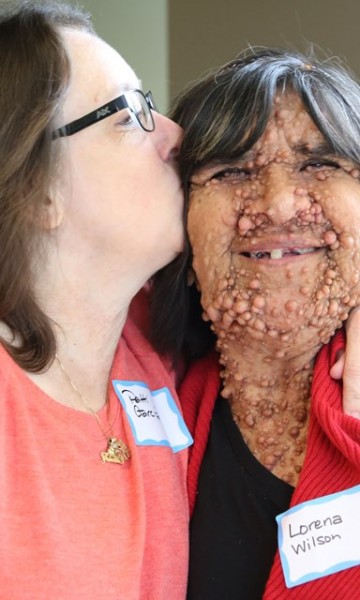NF Midwest Symposium & iNFo Fair Highlights Part 1
NF Midwest’s 27th Symposium & iNFo Fair held November 11 was chocked full of iNFormation. So much so that there’s no way to share it all. Unfortunately, it was something you had to be there for to really soak it all in.
We have many requests for recordings or slides and are working on what we can share, but it will be limited. Due to the sensitivity of the discussions, privacy issues, and/or to protect unpublished research, it’s frequently impossible to share. If there are specific questions you are looking for answers to you should join the new NF Community on the patient platform Genefo and post your questions there. Go to www.tinyurl.com/NFHello to sign up. It’s a great place to post your questions.
For now, we just wanted to share some of the important information that came out of the event. Here’s part one of our two-part overview!
Here’s Part One of Our Update:
Dr. Kaleb Yohay presented on “alternative” or “complementary” therapies for NF. There are MANY different supplements, etc that are being used by NF patients. In the end, none of them have really been studied for NF though many have been studied in general. The big take away here is that NF patients should take Vitamin D, but to make sure that they don’t take too much (2000 mg adults/1000 mg kids). Also, one of the most commonly used supplements in the NF community is turmeric/curcumin. Turmeric is thought to have properties that may be good for overall health but there is some emerging information that it might be helpful in NF. It is VERY important that you always inform your doctors as to what supplements/vitamins you are taking as some may interact or interfere with other drugs or treatments. Many other supplements were discussed.
Dr. Nicole Ullrich updated us on the many different drugs that have been or are in clinical trials, for the various clinical manifestations of NF1. There have been, or are, trials on neurofibromas, plexiform neurofibromas, optic gliomas, tibial or ulnar pseudoarthrosis, malignant nerve sheath tumors, and learning disabilities. There are many other complications of NF1 to be explored. Many drugs have looked successful in mice but have not proven as successful in humans but every trial is teaching researchers something and moving us forward. Selumetinib, a MEK inhibitor, is proving to have some success but not in all cases. Other valuable information included findings that the risk of progression in plexiform tumors is high in childhood and less so in puberty. This goes against what was often believed. Though a plexiform can become more aggressive at any time the risk decreases with age. Also, approximately 1/3 to half of people with NF1 have a plexiform and if they grow quickly, become very painful, and/or hard patients should contact their doctor quickly as this may be an indication of a malignancy.
Dr. Charles Moertel did an amazing job taking us through many of the common complications with neurofibromatosis type 1. It’s impossible to recap them all. Some of the important highlights include…
- “Radiation is never your friend” if you have NF1…though sometimes it may be necessary – so be careful!
- The risk of cancer is quite a bit higher in people with NF1.
- ALL women with NF1 should start having mammograms after the age of 30. This is a standard of care now and should be covered by your insurance if you have NF1.
- Autism Spectrum Disorder should get more attention in people with NF1 as it is more prevalent.
- There are still doctors mistaking a UBO (unidentified bright object) for a brain tumor. There are children who have been treated for brainstem gliomas that did not have a brainstem glioma – so be careful!
- Standard therapy for brain tumors for people with NF1 is not the same as it is for people without NF1 – so be careful!
Dr. Anand Germanwala, MD of Loyola University is a neurosurgeon who spoke about a relatively novel (10-12 years) approach to the surgical removal of cranial-base tumors, including meningiomas that occur in NF2. His approach is an endoscopic endonasal approach to the tumor, which is less invasive than the customary craniotomy, and one which he feels, for certain tumors in certain locations, is preferable due to the minimal contact with brain tissue. Dr. Germanwala also provided information on research he is currently conducting that is cited in the publication, BMC Cancer, 2017, February 13, along with a team at Loyola University. In his study, he looks at the differences in genomic sequencing of two surgically resected meningiomas within the same patient.
Check out photos from the event Sign Up for the new NF Community







.png)






Could you please post the entire Dr. Yohay Presentation?